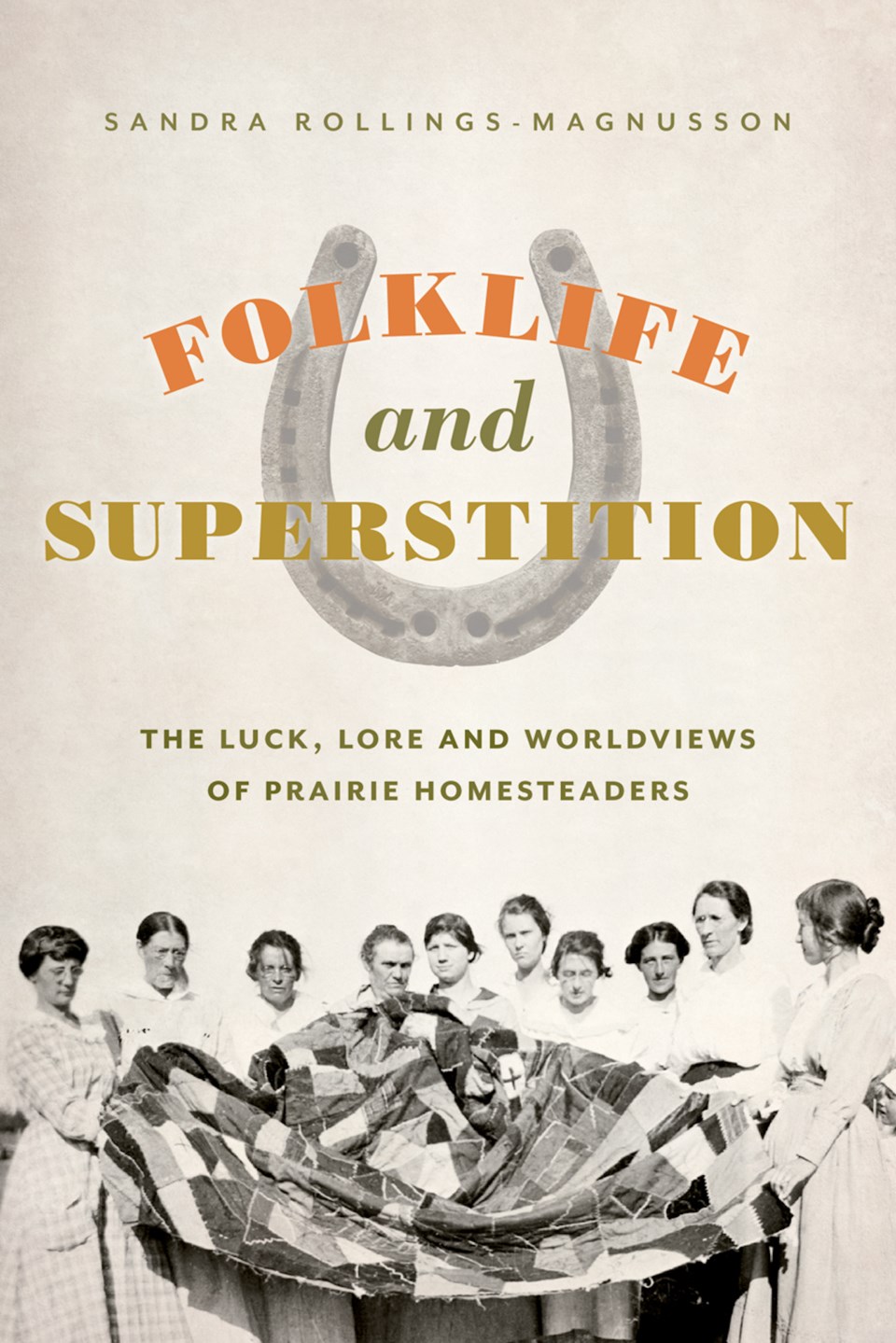More than 150 years after Canada’s Dominion Lands Act began ushering hundreds of thousands of European, eastern Canadian, and American men women and children to homestead the vast expanse of the western prairies, the practice is receiving much attention from modern individuals looking to reconnect with self-sustained living.
But for author, historian, and associate sociology professor Sandra Rollings-Magnusson, her interest in homesteading long pre-dates its trending status on the internet, and her latest dive into life on the prairies surrounding the turn of the 19th century hit the shelves this fall.
Folklife and Superstition: The Luck, Lore and Worldviews of Prairie Homesteaders is Rollings-Magnusson’s newest book on the subject of homesteading and is the first compilation of the social and cultural beliefs and practices of Canadian prairie living.
“You have all the historical events about the years that they came out, the number of people that came out, all those types of historical facts,” said Rollings-Magnusson. “But what I wanted to get into is the nitty-gritty."
“What were they like? What did they think? Did they develop what was called a folklife?”
Rollings-Magnusson has been intrigued by homesteading for much of her life. With homesteaders in her family tree, she developed an interest in collecting relics from the era—kitchenware, spinning wheels, and even old washing devices.
She was introduced to the treasure trove of first-hand accounts of farming and social practices from Saskatchewan settlers housed in the provincial archives in Regina while studying for her master’s degree.
But after writing four books on the subject, she still had questions as to what day-to-day living was actually like.
“There are all these different people, from Germany, Switzerland, Poland, England, Scotland, Wales, and so on. But there’s something that brought them together, commonalities that made life at that time special.”
Folklife and Superstition sheds light on the tight-knit bonds that formed between neighbours, even with language barriers and cultural chasms in the way. Rollings-Magnusson describes the comradery borne out of the hard labour of building houses, clearing fields, and surviving the harsh conditions on the prairies.
“Life was so much hardship, but on the other hand, what I’m surprised by was the happy times,” said Rollings-Magnusson. “Where they visit each other and enjoy each other’s company, even though they might not be able to talk to each other.”
Small town shoutouts
Folklife and Superstition contains stories and first-hand historic accounts of daily life in Manitoba, Saskatchewan, and Alberta between 1867 and 1914. The book references more than 160 communities and locations throughout the three provinces: 105 in Alberta, 31 in Manitoba, and 127 in Saskatchewan.
Athabasca, Boyle, and Westlock are among the Alberta communities referenced in the book, as are Okotoks, Innisfail, Bragg Creek, and even the province's major cities.
Rollings-Magnusson said most of her research and content was derived from the provincial archives of Alberta and Saskatchewan, and while she had visited smaller community archives over the years, she hasn’t been to Athabasca’s.
But she does share a connection with the Gateway to the North. Rollings-Magnusson said her mother married an Athabascan man later in life, creating a link to the area despite not yet having visited the region herself.
Although a vast expanse of prairie land and a range of ethnic origins separated many of the locations referenced in Folklike and Superstition, commonalities between homesteaders across the West are evident.
One such commonality was a proclivity for good-natured mischief. Rollings-Magnusson discovered accounts of banging pots and pans outside a newlywed couple’s window all hours of the night and antics popular in the lead-up to Halloween.
Homesteaders who didn’t keep a watchful eye on their buggies would often find the smaller front wheels swapped with the larger back wheels, making driving and turning a difficult task. At times, owners could even find their wagon or buggy on top of haystacks or even buildings.
She shared stories of water balloons made from paper bags being dropped on hotel guests from above, and the execution of even more intricate, organized pranks.
“In other cases, they took all the outhouses that were locally around and put them all down main street and take signs off all the stores and put the signs on the individual outhouses,” Rollings-Magnusson said with a laugh.
Folklife and Superstition was published Sept. 3 by Heritage House Publishing, a B.C.-based organization. Copies of Rollings-Magnusson’s latest work can be purchased wherever books are sold.
“Oftentimes, people look at history (through rose-coloured glasses), and they don’t believe the amount of labour that’s involved. Back then, it was a life of hardship, perseverance, overwhelming odds."
“That’s what I want people to take away today, is recognition about how much labour they spent in developing not only the homestead, but the communities, and the creation of community spirit.”



